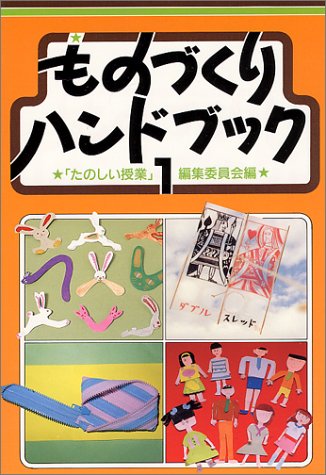1 0 0 0 スミレとヒマワリ(第5回)右手に釣り竿、左手に憲法
- 著者
- 白神 優理子
- 出版者
- 日本国家公務員労働組合連合会
- 雑誌
- Kokko = こっこう : 「国」と「公」を現場から問い直す情報誌
- 巻号頁・発行日
- no.36, pp.104-108, 2019-08
1 0 0 0 スミレとヒマワリ(第6回)ME TOOカフェ
- 著者
- 白神 優理子
- 出版者
- 日本国家公務員労働組合連合会
- 雑誌
- Kokko = こっこう : 「国」と「公」を現場から問い直す情報誌
- 巻号頁・発行日
- no.37, pp.132-136, 2019-11
1 0 0 0 IR 生きて働く国語の力を育てる授業づくり : 日常生活 社会生活につながる言語活動とは
- 著者
- 室 真紀子
- 出版者
- 大分大学国語国文学会
- 雑誌
- 国語の研究 (ISSN:09173544)
- 巻号頁・発行日
- no.40, pp.8-12, 2015-03
1 0 0 0 OA 映画観客の読書実践: 1920年代日本における映画館プログラムと「観ること」
- 著者
- 近藤 和都
- 出版者
- 日本マス・コミュニケーション学会
- 雑誌
- マス・コミュニケーション研究 (ISSN:13411306)
- 巻号頁・発行日
- vol.87, pp.137-155, 2015-07-31 (Released:2017-10-06)
- 参考文献数
- 28
In traditional research on film reception, the cinema experience has been defined by the time period and the space in which audiences experienced the film. However, audiences also experience the cinema before and after going to the movies through the media, such as through film magazines, trailers, posters, and so on. Understanding how the film is received by audiences, researchers should consider other forms of media surrounding the film-going experience. From this perspective, this paper focuses on brochures that were published by almost all of the prewar movie theaters and analyzes the reading practices of audiences. We first compare exhibition practices by movie theaters with those by opera theaters, and argue that movie theater brochures were formed out of Western modern theater publications. The results show that prewar film exhibitors struggled to contextualize the movie into traditional theater exhibitions because cinemas were considered to be of a lower social standing than prior theater exhibitions. After exploring the origin of brochures, we focus on the contributors' column in which audiences expressed their opinions and differentiated themselves from each other to elevate their status. These contributions were regarded as a kind of literature and audiences usually read them before and after watching films. Some audiences were attracted to brochures and collected them. In particular, brochures published by movie theaters in Tokyo gained popularity. Because of the distribution system, a considerable number of films were only shown around the Kanto region. Instead of receiving original text, rural audiences experienced films vicariously through reading the brochures. Through the analyses above, we conclude that the way of watching films during 1920s in Japan was related not only to the film's text but also other practices such as writing and reading and audiences experienced something beyond the screen.
1 0 0 0 OA リハビリテーション病院の新人理学療法士に対する転倒予防教育プログラム
- 著者
- 井上 靖悟 大高 洋平 小田 ちひろ 後藤 悠人 守屋 耕平 工藤 大輔 近藤 国嗣 松浦 大輔
- 出版者
- 日本転倒予防学会
- 雑誌
- 日本転倒予防学会誌 (ISSN:21885702)
- 巻号頁・発行日
- vol.3, no.3, pp.47-54, 2017-03-10 (Released:2017-09-25)
- 参考文献数
- 15
- 被引用文献数
- 1
【目的】本研究の目的は,新人理学療法士に対する転倒予防の新たな教育プログラムが,リハビリテーション病院の理学療法中の転倒を減少させるのかについて検討することである。【方法】2011年4月から2016年3月の5年間に理学療法中に発生した転倒事例について後方視的に調査を行った。2014年4月より新しい理学療法士の新人教育プログラムを導入し,その前後の転倒発生の変化について調査した。新しく導入したプログラムは,理学療法中の過去のインシデントを基に,各動作における環境設定や介助方法などリスク管理に必要な注意点を細分化したリストを活用した実践型プログラムである。指導者はリストの各項目について説明を加えながら実際の動作を見せることで新人の指導を行い,新人は指導者の行う場面の見学,そして模倣を繰り返した。また,指導者は随時実施内容の修正やフィードバックを与え,新人の技術向上を図った。経験段階をすべての項目についてチェックし,最終的にすべての技術を1人で実践できることを目標とした。この教育研修プログラムを,新人教育期間である4月から6月の3か月間にわたり理学療法科全体で実施した。 年間転倒件数および理学療法士1人あたりの年間転倒発生件数,転倒時動作の種類,転倒時動作の自立度について,新しい教育プログラムを導入した前後で比較した。【結果】新人理学療法士の数は,平均±標準偏差にて,教育プログラム導入前10.0±1.7名,導入後9.5±2.1名と大きな変化を認めなかった。新人理学療法士の平均転倒件数は,導入前は10.7±2.5件,導入後は5.0±1.4件と半減し,理学療法士1人あたりの平均年間転倒発生件数も,導入前1.1±0.1件,導入後0.5±0.5件と半減した。転倒時動作の種類は歩行が一番多かったが,教育プログラム導入後は,そのうち介助歩行の患者の転倒が減少する傾向を示した。【結論】新人理学療法士に対する動作ごとのリスク管理のリストを用いた現場教育は,理学療法中の転倒件数の減少に有効である。
- 著者
- 藤瀬 武彦 橋本 麻里 長崎 浩爾
- 出版者
- 新潟国際情報大学経営情報学部
- 雑誌
- 新潟国際情報大学経営情報学部紀要 (ISSN:24342939)
- 巻号頁・発行日
- vol.1, pp.1-18, 2018-04-01
本研究では女子学生の理想体型を明らかにするために、形態数値の明らかな12名の女子学生モデル(BMIが15.5~25.8 kg/m2)の中から理想体型を選択させ、被験者の実測体型との関連についても検討した。被験者は女子学生322名(年齢19.8±1.9歳、身長159.5±5.6cm、体重52.9±7.9㎏、BMI20.8±2.8 kg/m2)であった。アンケートにより理想とする形態数値(数値理想体型)などを回答してもらうとともに、理想体型モデルを選択させてその形態数値を用いて分析した。現状よりも「痩せたい」と回答した女子学生は85.7%(276名)であり、主な痩せたい理由については「スタイルを良くしたい」(37.7%),「太いから」(34.8%),「着たい服があるから」(12.7%)などであった。数値理想体型は、身長161.1±4.6cm、体重48.2±4.6㎏、BMI18.6±1.4kg/m2、バスト85.4±5.5m、ウエスト60.0±4.3cm、ヒップ83.4±5.8cmであり、これらは実測体型それぞれの数値と有意な相関関係が数多く認められた。一方、理想体型モデルの数値は、脚長72.3±2.4cm(理想身長比46.1%)、指極159.1±3.7cm(101.6%)、体重43.8±5.7㎏、BMI17.8±1.9 kg/m2、バスト79.5±3.8cm(50.8%)、ウエスト60.7±2.9cm(38.8%)、ヒップ83.5±3.8cm(53.3%)などであり、これらの数値は実測体型それぞれの数値との間にほとんど有意な相関関係は認められなかった。数値理想体型とともに 理想体型モデルの数値を用いて理想とする体型の数値を求めると、身長161.1㎝、体重46.2㎏、BMI17.8kg/m2、バスト85.4㎝、ウエスト62.5㎝、ヒップ85.9㎝であり、またこれらの他には脚長74.3㎝、指極163.7㎝、上腕囲23.2㎝、前腕囲21.7㎝、大腿囲50.9㎝、下腿囲32.2㎝、足首囲21.7cmなどであった。以上の結果から、形態数値の明らかな理想体型モデルの選択によって日本人若年女性の理想体型のより客観的数値が求められ、この数値は女子学生自身の体型数値とはほぼ無関係であることなどが明らかとなった。
1 0 0 0 OA レニン-アンジオテンシン系阻害薬の腎保護メカニズム
- 著者
- 西山 成
- 出版者
- 公益社団法人 日本薬学会
- 雑誌
- YAKUGAKU ZASSHI (ISSN:00316903)
- 巻号頁・発行日
- vol.132, no.4, pp.455-459, 2012-04-01 (Released:2012-04-01)
- 参考文献数
- 29
- 被引用文献数
- 3 3
In recent years, the focus of interest on the role of the renin-angiotensin system (RAS) in the pathophysiology of hypertension and organ injury has changed to a major emphasis on the role of the local RAS in specific tissues. In the kidney, all of the RAS components are present and intrarenal angiotensin II (Ang II) is formed by independent multiple mechanisms. Ang II is compartmentalized in the renal interstitial fluid and the proximal tubular compartments with much higher concentrations than those existing in the circulation. It has also been revealed that inappropriate activation of the intrarenal RAS is an important contributor to the pathogenesis of chronic kidney disease (CKD). Indeed, most national guideline groups now recommend the use of RAS inhibitors in preference to other antihypertensive agents for hypertensive patients with CKD. In this review, we will briefly summarize our current understanding of independent regulation of the intrarenal RAS. We will also discuss the impact of RAS inhibitors in preventing the progressive increases in the intrarenal RAS during the development of CKD.
1 0 0 0 仮説実験授業のABC : 楽しい授業への招待
1 0 0 0 たのしい授業
- 著者
- たのしい授業編集委員会
- 出版者
- 仮説社
- 巻号頁・発行日
- 1983
- 著者
- 小野 健司
- 出版者
- 四国大学
- 雑誌
- 四国大学紀要 = Bulletin of Shikoku University (ISSN:09191798)
- 巻号頁・発行日
- no.48, pp.51-63, 2017
1 0 0 0 OA 教育の常識と〈教師の研究の自由〉 ―― 石井勲による漢字教育の実験――
- 著者
- 小野 健司
- 雑誌
- 四国大学紀要 = Bulletin of Shikoku University
- 巻号頁・発行日
- no.48, pp.51-63, 2017-06-20
- 著者
- 武田 芳紀
- 出版者
- おかやま人権研究センター
- 雑誌
- 人権21 : 調査と研究
- 巻号頁・発行日
- no.258, pp.45-49, 2019-02
1 0 0 0 3月例会報告 仮説社・川崎浩さんのお話を伺って
- 著者
- 川崎 浩 市川 雅子
- 出版者
- 科学読物研究会会報編集部
- 雑誌
- 子どもと科学よみもの
- 巻号頁・発行日
- no.442, pp.2-4, 2014-06
1 0 0 0 オリジナル入門シリーズ
- 出版者
- 仮説社
1 0 0 0 シリーズものの見方考え方
- 出版者
- 仮説社
- 巻号頁・発行日
- 1992
1 0 0 0 ものづくりハンドブック
- 著者
- 「たのしい授業」編集委員会編
- 出版者
- 仮説社
- 巻号頁・発行日
- 1986

